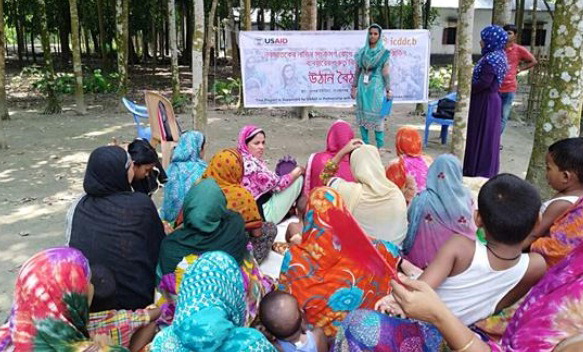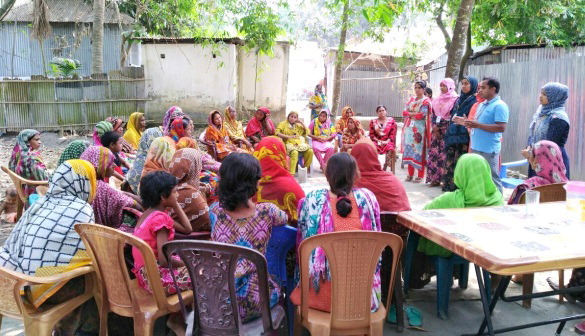|
Cycle 5 (2016 Deadline)
Community intervention to promote Chlorhexidine for reducing umbilical cord infections in Jamalpur district, Bangladesh
PI: Lutfe Ara (lutfeara@icddrb.org), International Centre for Diarrhoeal Disease Research, Bangladesh (icddr,b)
U.S. Partner: Eben Kenah, University of Florida
Project dates: March 2017 - October 2019
Project Overview
Neonatal mortality is one of the major challenges facing most of the low- and middle-income countries like Bangladesh, where neonatal sepsis is the third leading cause of these deaths. The effectiveness of applying 7.1% chlorhexidine digluconate (delivering 4% chlorhexidine) on the umbilical cord stump to prevent umbilical cord sepsis and neonatal death has been proven through community‐based clinical trials in Bangladesh, Nepal, and Pakistan. In Bangladesh, however, chlorhexidine is not widely used in the rural areas, and no community intervention has been implemented to train and motivate pregnant mothers, their family members, community members, and traditional birth attendants (TBAs) to use chlorhexidine for neonatal umbilical cord care.
The PEER project team conducted an 18-month study in Jamalpur, Bangladesh, to assess the effectiveness of a community intervention. The study built awareness among pregnant mothers, their family members, other community members, TBAs, and pharmacy personnel on umbilical cord infections and the effectiveness of using chlorhexidine to prevent sepsis. These interventions will eventually help in achieving development goals for child health by reducing under-five mortality.
 |  | | The team meets with the community and invites them to participate in their study (photos courtesy of Dr. Ara). |
Final Summary of Project Activities
Dr. Lutfe Ara and her group conducted a baseline study of chlorhexidine use; rate of umbilical cord sepsis; and knowledge, attitudes, and practices of the respondents in both an intervention group and a control group. The PEER team then implemented a Social and Behavioral Change Communication (SBCC) intervention in the intervention group. Field research assistants undertook more than 22,000 door-to-door meetings with mothers, grandmothers, family members, and community members to raise awareness on umbilical cord care and cord infection, discussing the advantages and the proper use of 7.1% chlorhexidine for umbilical cord care among pregnant women. The research team also organized three town hall meetings and 30 community meetings to further knowledge sharing, inviting community leaders, school administrators, and journalists.
Following the SBCC intervention, the intervention group exhibited a significant increase in chlorhexidine use—1.1% to 57.8%—and recorded a reduction—8.02% to 1.6%—in the rate of umbilical cord infection. The PEER team visited pharmacists to share information about chlorhexidine and to ensure a regular supply of the drug in the area. About 150 TBAs as well as family members of pregnant mothers were trained on the advantages and the proper use of chlorhexidine through the intervention. The PI and her colleagues shared results with the director of primary health care under the Directorate General of Health Services of Bangladesh, who expressed interest in incorporating SBCC into the Bangladesh National Guideline to promote the use of chlorhexidine throughout Bangladesh.
Publication
Lutfe Ara, Md Al Amin, Waseq Billah, Shohel Mahmud, Riyasad Iqbal, Taranum Rahman, Md Ehsanul Haque Tamal, and Eben Kenah. 2021. Effectiveness of social and behavioral change communication intervention to promote the use of 7.1% chlorhexidine for umbilical cord care in hard-to-reach rural Bangladesh: A mixed method study. Journal of Global Health 11: 04006. https://doi.org/10.7189/jogh.11.04006
Back to PEER Cycle 5 Grant Recipients
|
|
|
|





